This summer, I created a paper plane that flies the furthest compared other planes on Youtube. My plane flies up to 15.5 meters but others flew only 6 to 10 meters. Even the plane that claims it holds the world record only flew 6.6 meters. I made all the planes with the same A4 paper and tested them in an open space on a day without wind.

Instructions on how to make my plane can be found on Youtube here: https://youtu.be/LgEvtO2pOBE
What makes my plane fly far?
Paper planes need lift to fly. Lift is the force that pushes the plane up as it goes through the air.
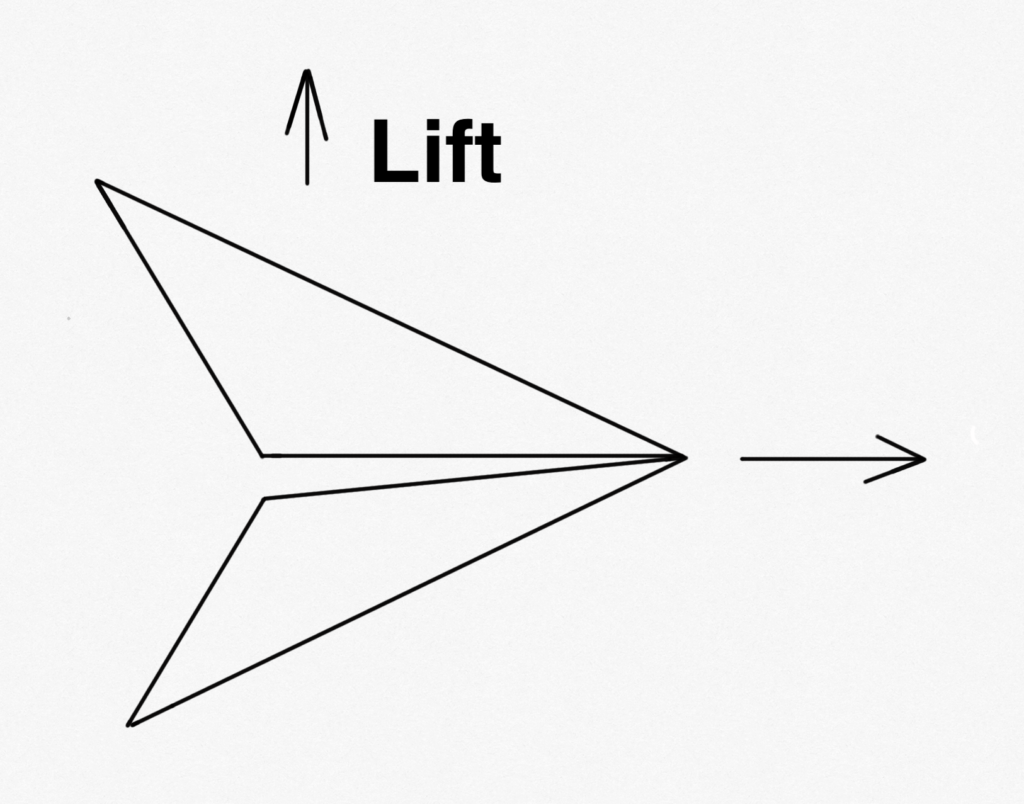
As you can see in the Youtube video, my plane glides smoothly for a long distance. Three parts of the plane that give it lift are:
- Wing Tips
- Fold under the wings
- Plane body
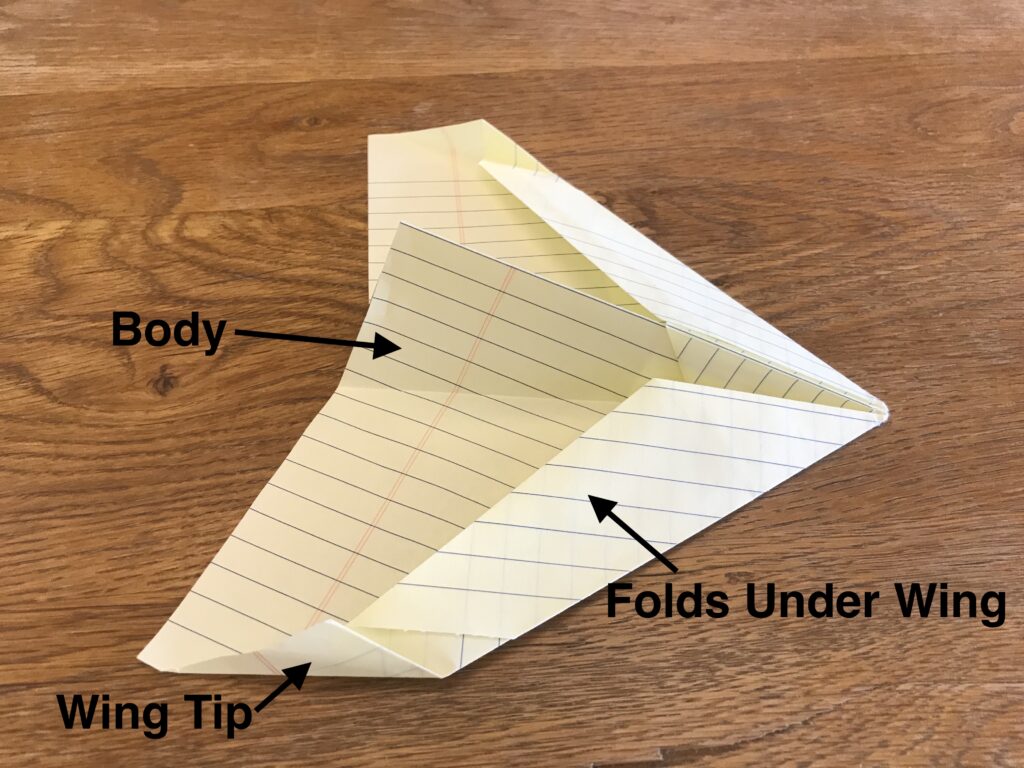
The trick in making the plane that flies the furthest is having just the right amount of lift. Too much lift and the plane will zoom upwards and then crash down. Too little lift and the plane will just crash to the ground immediately.
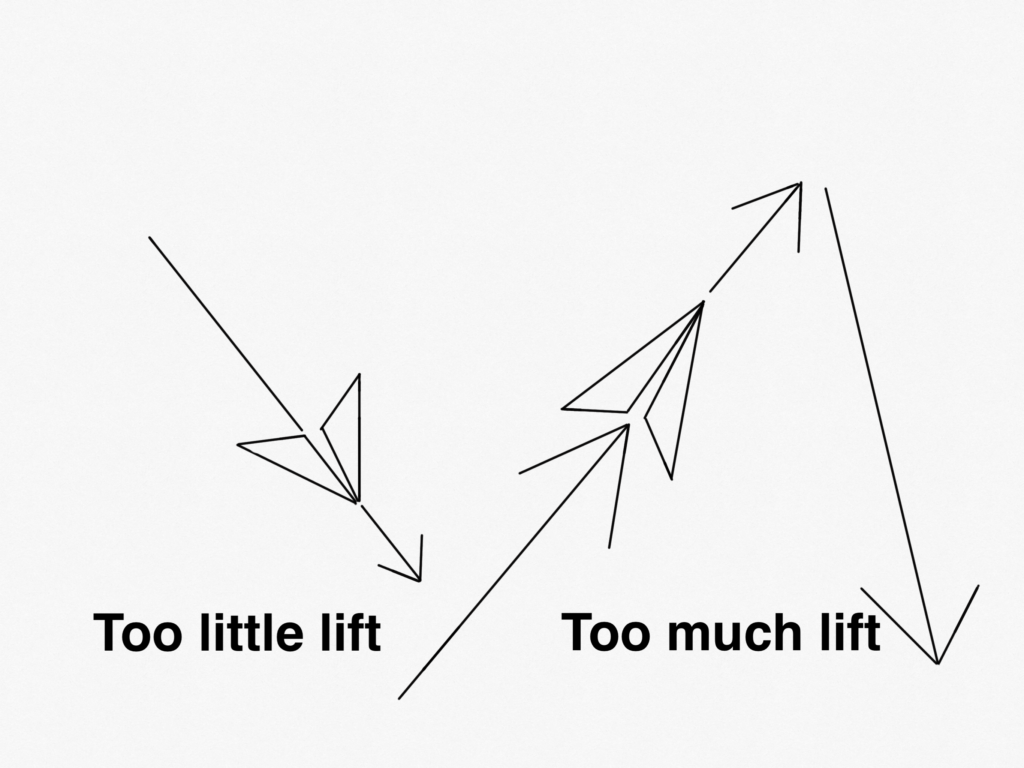
How do these parts of the plane provide lift?
Wing tips that are folded downwards push the air down when the plane is flying, as shown in the drawing below.

The folds under the wings give additional lift by also pushing the air down as it is flying, as shown in the drawing below.

The body also gives lift. This is probably surprising but true! The body of the plane naturally forms a V shape that pushes the air down when the plane goes through the air. This is shown in the drawing below.
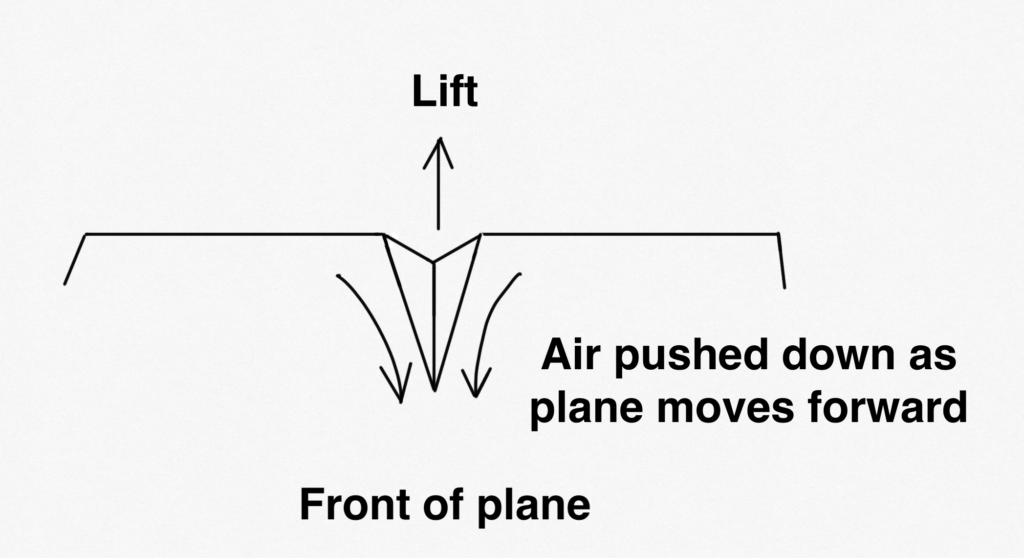
Problems that paper planes run into and why
After making many paper planes, I observed that the common problems that planes get into are:
- Spinning
- Shoot up and crash
- Crash immediately
- Turn around
Planes that spin usually have skinny wings. Planes that shoot up and crash have too much lift. Planes that crash immediately have too little lift. Planes that turn around have more lift on one wing compared to the other.
Other planes on Youtube
My favorite plane among the ones on Youtube is F15 paper plane https://youtu.be/RrkwgpUUXe8. It can fly as far as 11 meters. It glides smoothly through the air in straight line without crashing down.
I folded the world record paper plane https://youtu.be/EDiC9iMcWTc many times, following the instructions carefully to sharpen the edges and make sure it is perfectly symmetrical.
But I couldn’t get it to fly more than 6 to 7 meters. It crashed instead of gliding. When I saw the video on Youtube, it feels like you need a special way of throwing and may be an adult with big muscles. More like throwing a baseball, not a plane.
How did I create this plane?
It wasn’t supposed to fly! The following was a messy plane I made.
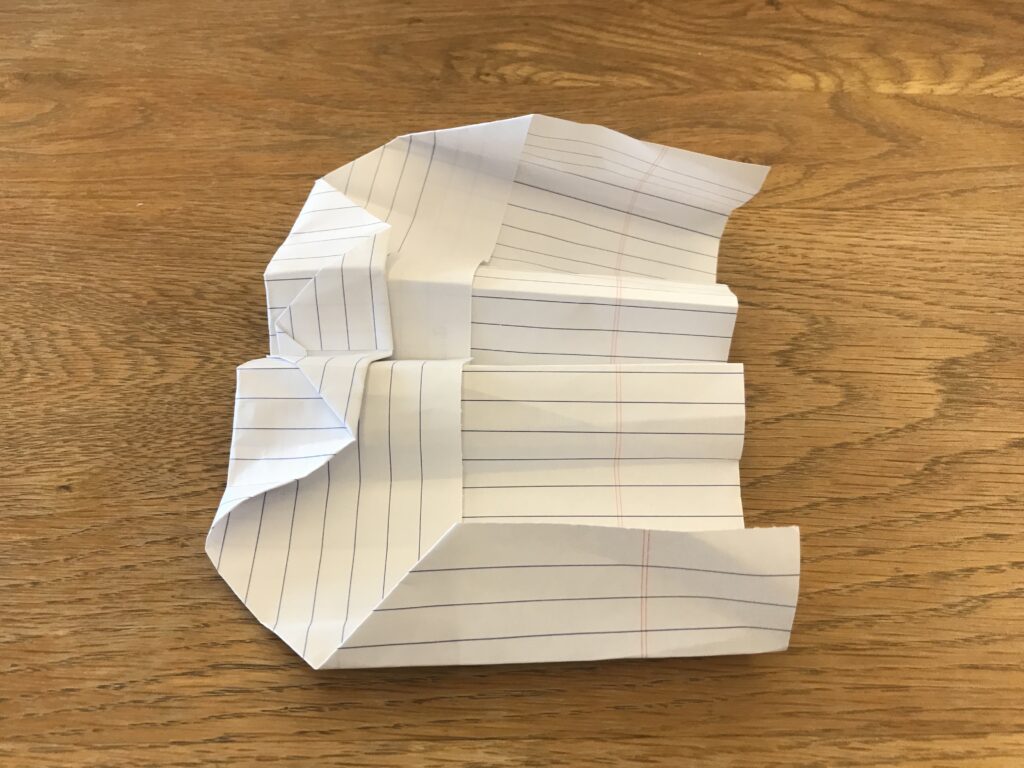
Instead of just dropping to the ground, if actually glided in the air smoothly and beautifully. Other planes I made carefully from instructions from Youtube or books didn’t fly as well. I made sure I sharpened the creases and made them as symmetrical as I can.
Experiments to my make plane better
This plane got me curious.
Why did such a messy plane fly so beautifully? If I sharpened the creases, would it fly even better? How can I improve it?
I made it simpler and started experimenting with different variations. I tried making the plane bigger by folding the head back less. This caused the plane to shoot up. I tried to make the wings bigger by making a smaller body. I thought bigger wings should make a plane fly better. Instead it crashed to the ground.
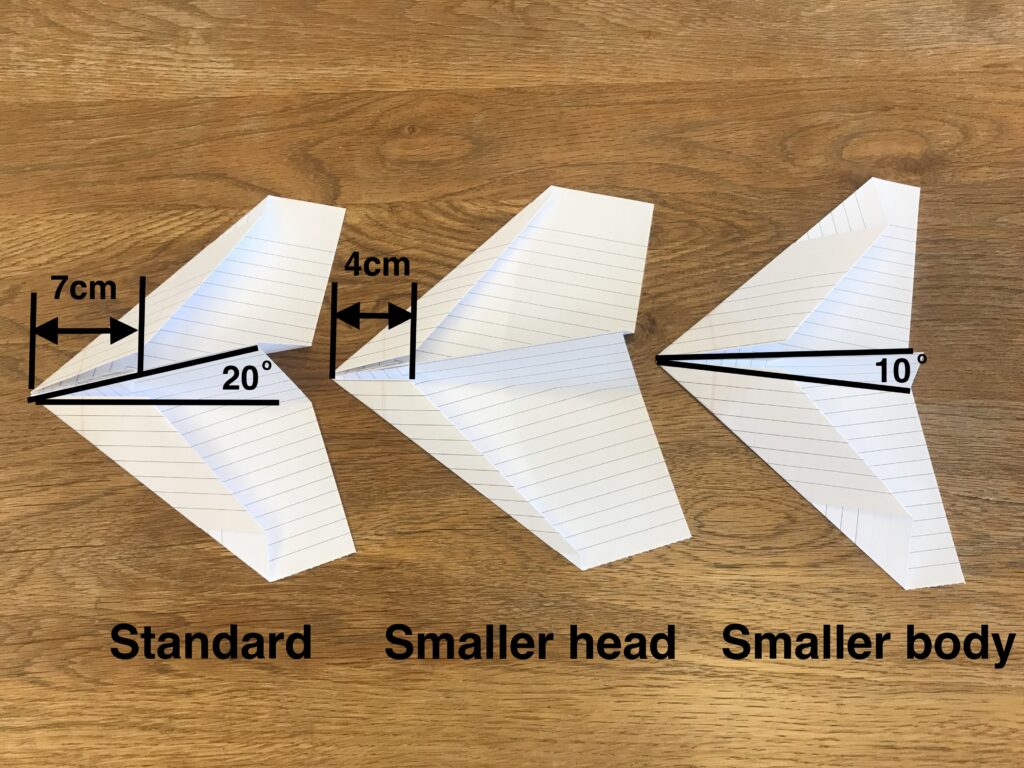
I also tried pasting tape on the plane to see if it would fly even better. What surprised me was that it flew WORSE and crashed to the ground! But this led me to understand that those folds and the body were needed for lift.
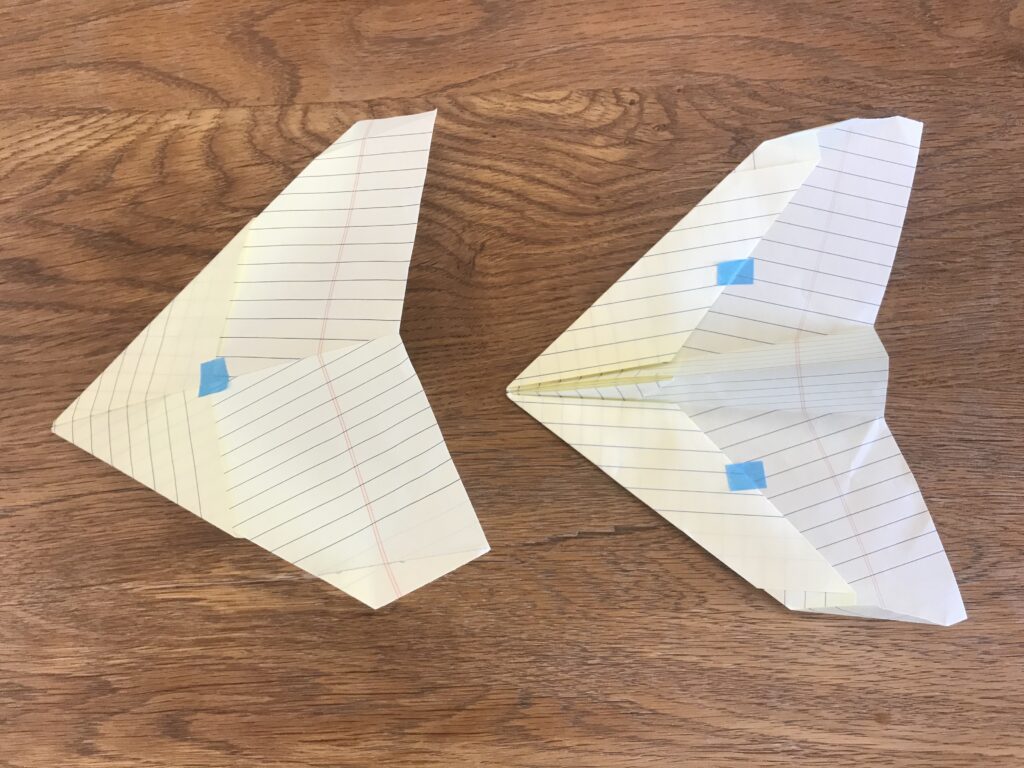
What effect does adding wing tips have? Does it matter if the wing tips are folded upwards or downwards? I discovered through experimenting, if the plane was crashing, adding wing tips folded downward provided additional lift. If the plane is zooming upwards, adding wing tips folded upwards helped to counter too much lift.
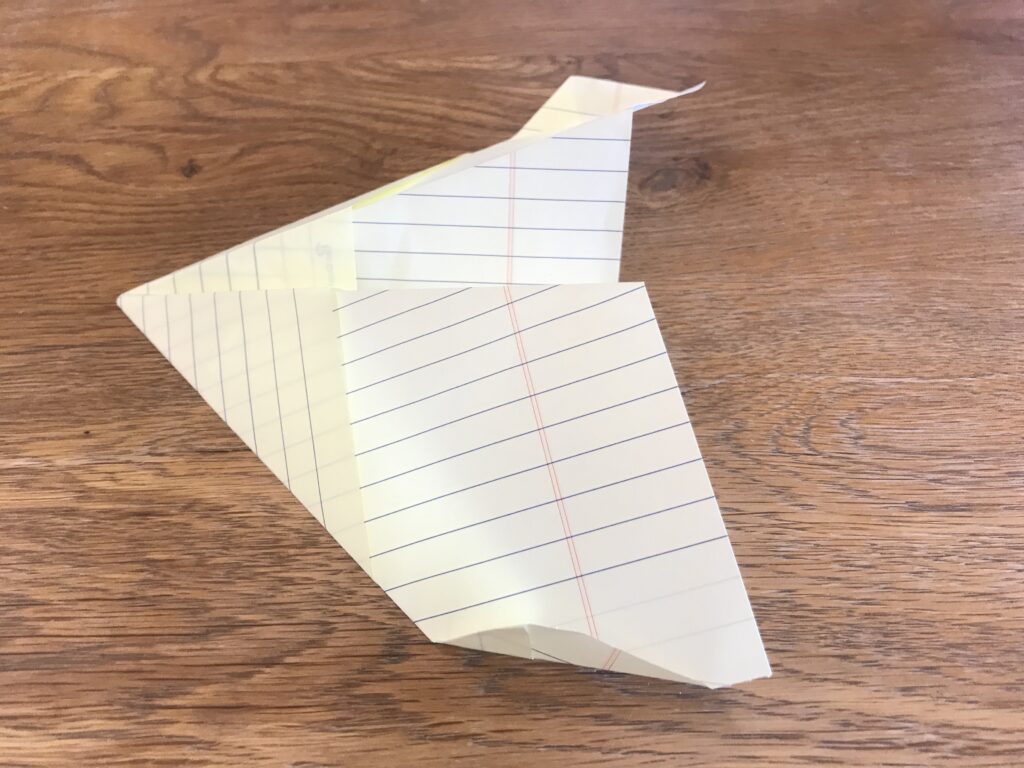
If you make my paper plane, and it doesn’t fly as beautifully, try making variations to the head, wing size and wing tips so that the lift is just right to glide straight.
Conclusion
I created a plane that flies the furthest by experimenting with crazy structures. I discovered a messy plane that flew better than many well made, sharpened planes from recipes. Next, I experimented with different variations of the plane to discover how I can make it fly better.
Not only have I discovered how to make a paper plane that flies the furthest, I now understand what gave the plane lift and how to adjust the lift so it is just enough, not too much and not too little, so it can glide beautifully through the air.

